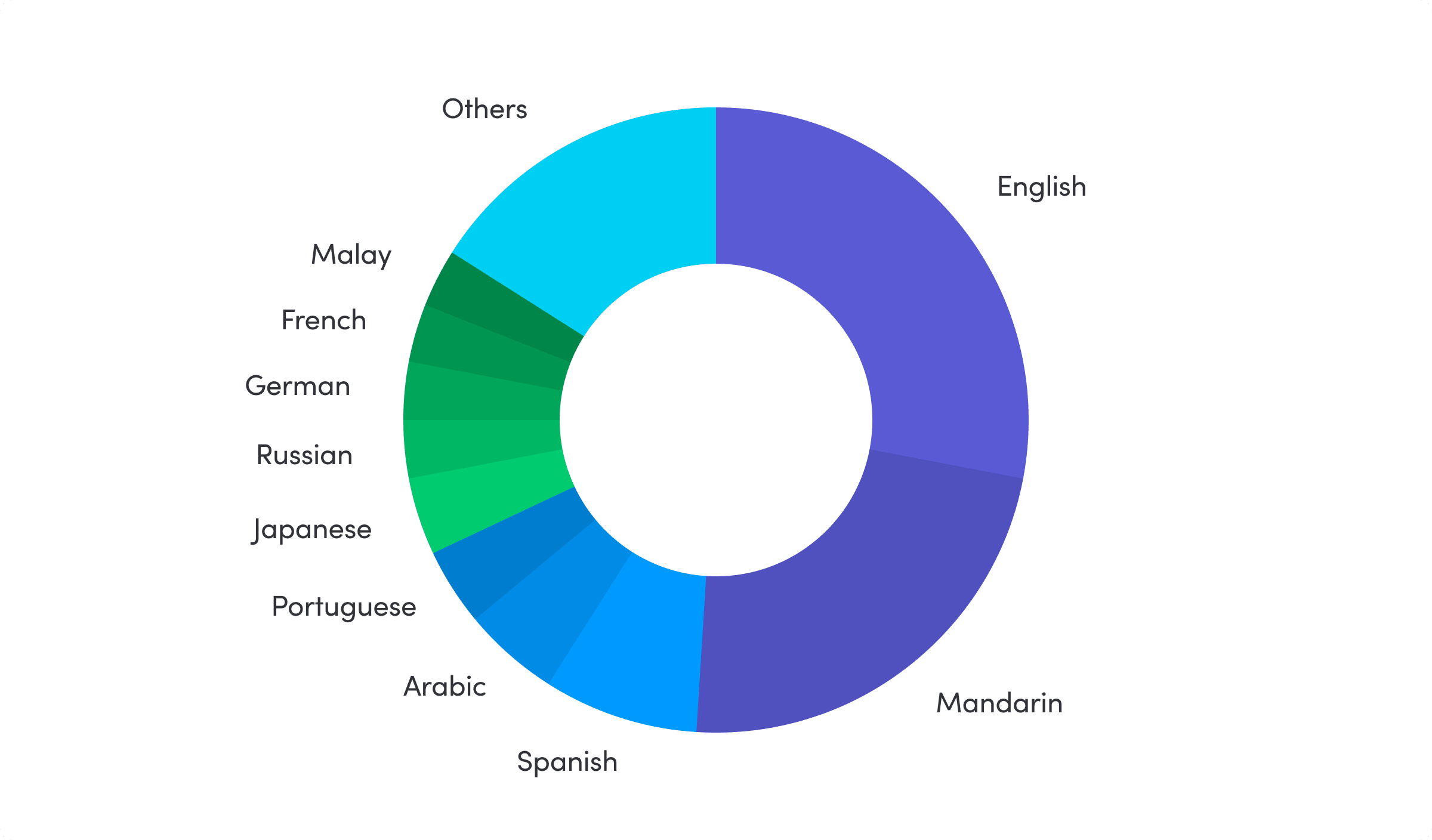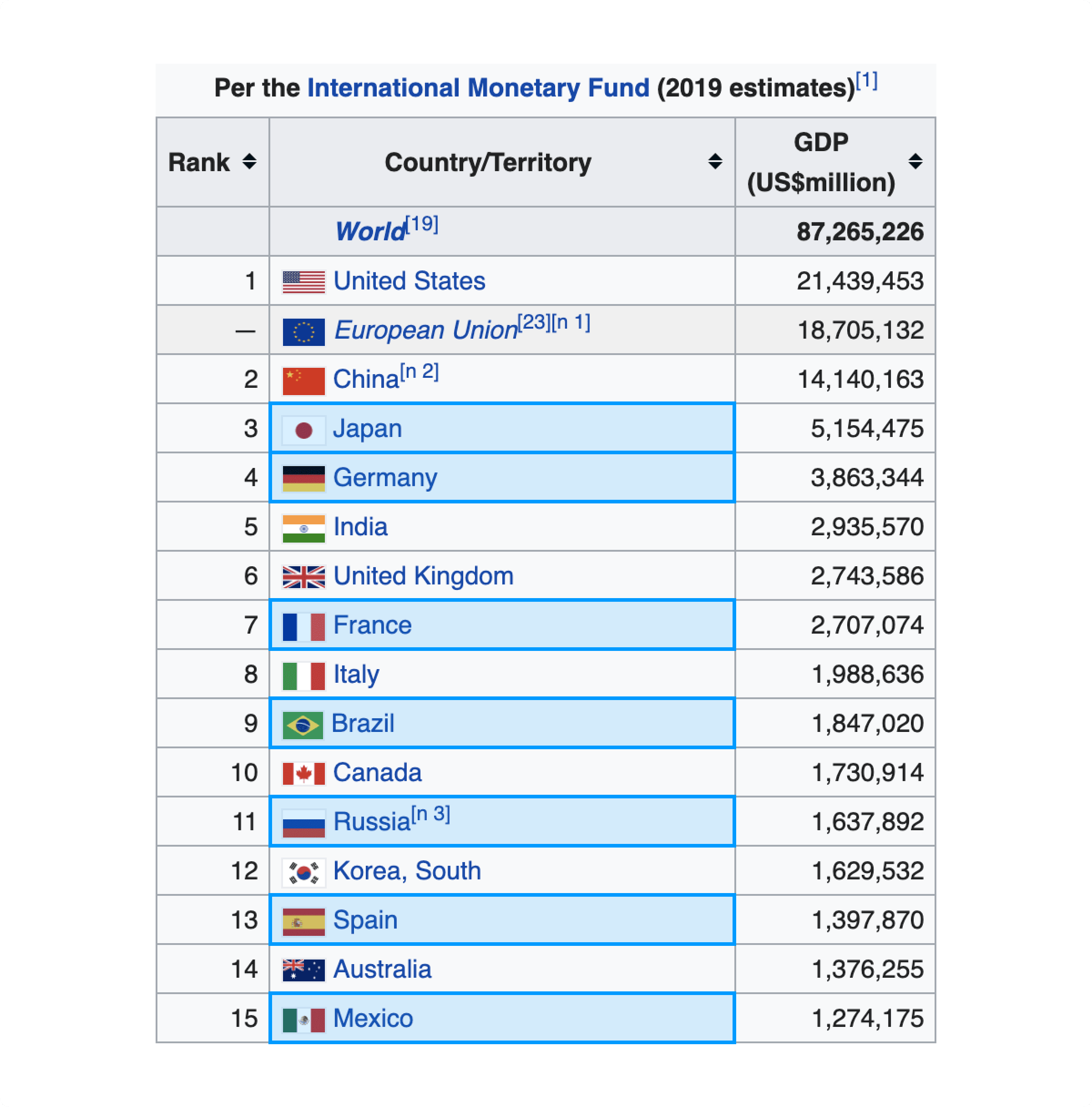The year? 2019. The challenge? Bring the monday.com Work OS to the Spanish market.
Like many other SaaS companies, we’ve long understood that targeting a single population is a waste of potential.
But localizing our platform – or adapting it to another language or culture – was no easy task.
By August, the platform was available in 7 other languages. As of this article, our platform already supports 13 different languages, including English, Spanish, French, German, Japanese, Portuguese (Brazil), Russian, Dutch, Italian, Korean, Swedish, Traditional Chinese, and Turkish.
And as more and more companies are attempting to localize the product, we wanted to share what we’ve learned. After a lot of research, testing, and success, we’ll attempt to answer the million-dollar question – how to successfully market a product across multiple regions.
How to overcome localization challenges – More than just translation
Language and accurate translation are crucial in reaching new regions and converting customers from around the world, but it’s not enough.
Localization marketing is not just translation; it’s a contextual adaptation of your marketing strategy. This means finding a way to target people with different cultures, ideals, beliefs, humor, and even purchasing preferences than your own.
Why is this so tough? Because, at the end of the day, a marketer’s performance is based on their knowledge of people and culture. As any experienced marketeer knows, the foundation of crafting a successful marketing message is ‘knowing your target audience.’
So, how can you know an audience that has an entirely different life experience than that of you and your team?
The following are our tried and true localization tips from our team to yours.
First, decide which markets to target
Before we get ahead of ourselves, this is a pivotal question to ask and answer before beginning any localization efforts.
Here’s how we chose our first 8 languages:
1. Traction – Choose the languages used in countries where your product or service already has good traction.
2. Language Popularity – Focus on widely spoken languages. There are roughly 6,500 spoken languages in the world today. As terrific as it would be to target all of them, it’s just not possible. We need to focus on the languages that will have the most impact. That said, just because a language is widely spoken doesn’t mean that it’s right for you or that you have the capabilities to overcome the challenges that come with that specific language. At monday.com, we have yet to tackle Mandarin due to the Great Firewall or Arabic due to the UI complications caused by right-to-left languages.

3. Region Potential – While the parameters to measure potential may differ from business to business, most SaaS companies should start with these 3: the number of internet users per capita, SaaS adoption, and GDP (Gross Domestic Product).

Second, make sure you have the infrastructure
Before you start building localized marketing campaigns it is crucial (this cannot be stressed enough) that your company has the infrastructure to back it up.
Not only does your marketing funnel need to be adapted but so does your entire customer experience.
Imagine you see an ad that’s perfectly translated and culturally appropriate. Then you try out the product only to discover – whomp whomp – that the product hasn’t been translated or localized.
Or finding a perfectly translated website only to see that the pricing is in a foreign currency and does not at all match the expectations of your market.
Maybe the worst possible scenario is purchasing a subscription with a culturally localized sales team only to find out in the moment of truth that there is no customer support offered in the expected language.
The bottom line is that localization is not something that can be done half-way. It is better to focus on fewer markets than spread yourself too thin to cover all of your bases.
Third, build your local marketing strategy
Okay, once you’ve identified the right markets and created a solid infrastructure for incoming potential users from that market, you can start getting the word out. (If not, you can bookmark this post and come back later.)
So, where to start?
Research your platforms
Not only does messaging change when marketing to different cultures but so does the medium.
Take some time to research and identify what devices are used in that specific country, what social networks they are on, what search engines are most popular, and what influencers they follow.
After you initially map out the relevant platform, you can begin testing. Start getting your message out there, put a little money behind it, a/b test your platforms, and determine which works best for your target market.
Interpret your marketing message
Interpreting your message for a foreign market is a double-pronged challenge – language and culture.
Language – Translating your marketing materials
Some make the mistake of thinking that translating your material is as clear cut as sending pre-written marketing material to a freelance translator. But as many who have already fallen into that particular pitfall will tell you, it is not that simple.
We’ve all seen those embarrassing marketing translations. When Schweppes Tonic Water launched its first product campaign in Italy, it was very literally translated into “Schweppes Toilet Water”.
And Pepsi’s “Bring you back to life” was translated in China as “Pepsi brings you back from the grave”. Probably not what they were going for.
But don’t worry – we’re not bringing you these cringe-worthy, if hilarious, failures to deter you, but to show how they can be avoided:
- In-house native translators – While this would be the best possible option, we realize that it’s not always feasible. We, at monday.com, employ in-house native localization experts for a few of the languages we target, but we certainly don’t for all 11 of them. However, even when we use third-party translators, we make an effort to get someone native from within the company to review the work, even if they are not necessarily a translator or a localization specialist. We do this because we need someone who understands both the local culture and the company’s messaging to review the translation before it goes to market to ensure that it all works together.
- Translation agencies – As we mentioned above, we too work with third-party translators. While not necessarily ideal, there are precautions you can make to ensure quality. First off, it’s important that you work with a trustworthy and certified agency. Second, put in the effort to onboard the translators correctly and help them get as familiar as they can with your product and messaging. If possible, request to work with the same translators within the agency so that you don’t encounter the same mistakes over and over again. Keep an open line of communication and update them on any changes or additions made in the company.
- Local agencies – Working with local partners, we’ve also found that working with marketing agencies as consultants is an extremely effective way to localize our marketing. We work with various types of partners across the globe. Not only do they thoroughly understand both the language and the culture, but they are well-versed in marketing (within that culture) as well. While they aren’t in-house, they usually have experience working closely with in-house teams in order to deliver the right campaign within the context of the local market.
Culture – Adjust your marketing materials for the local culture
Marketing across cultures requires an open mind to perspectives completely different than your own. Belief systems have an extremely strong effect on consumer behavior and must be taken into account when building your marketing strategy.
However, it is nearly impossible for an outsider to fully understand the local nuances in order to develop the exact right messaging.
That’s why when we craft our messaging for a new market, we make sure to consult with a local entity, whether it be a partner or a local marketing agency.
For example, a couple of months ago, we decided that in order to increase our sign-up rate in Germany we need to take a closer look at the culture aspect and adjust our ads.
After conducting full market research and consulting with a German partner, we came up with a few interesting insights.
According to the research, Germans react more favorably to –
- Older actors playing managers
- Ads with harmonious colors rather than contrasting colors
- Ads that run at a measured pace rather than choppy and quick
- Products that highlight privacy certifications
With all of this in mind, we took one of our existing top-performing worldwide ads and decided to localize it. We chose a testimonial ad because they foster trust which is a key issue for the German market.
We contacted a local video production company to help us produce our first fully localized German ad.
Adapt all of your marketing materials
Finally, once you decide to tap into a new market and start adapting your material (both linguistically and culturally), the only question is – how far do you know to go? Beyond localizing target ads, what other marketing material should localize?
The ideal answer: everything. From social media and blogs to affiliate marketing, the more holistic you are in localizing your marketing material the better. Social media has the power to further engage potential customers, blog posts can go a long way to boost your SEO ranking and the list goes on.
The realistic answer: Start with what you can and continue as you grow your presence in the local market. Here it comes down to the different capabilities and needs of each company.
When we say that you need to cover all your bases, this does not mean that you have to translate every last blog. You’ve localized your product, your web presence, customer service, and key marketing assets. That is a considerable effort and definitely enough to begin your penetration into a new market and get results.
What we do (and what we recommend you do) is localize the marketing assets that make sense for the specific market at the given time.
You will learn as you go – which brings us to the final key of marketing localization.
Last – try, try again
After a lot of research, work, and testing, our localization efforts are really paying off. To paint you a picture of where we stand today, here is a current map of our international presence:

But if we can leave with you one lesson we learned from our experience, it’s try, measure your results, adjust, and try again.
A recurring theme you probably noticed in all of the marketing localization guides you’ve read is trial and error. There is a lot of leg work that goes into targeting and marketing to a new region. Research, preparation, and consultation all have an important place in this process, but a key pillar of marketing, in general, is testing.
Execute, measure, contemplate, and start over.
Get your A/B testing template now!
There will inevitably be failed attempts at localization, as you’re entering uncharted waters. But we can tell you from our experience that the potential of tapping into entirely new markets and reaching thousands of potential customers is unmatched and well worth the investment.

